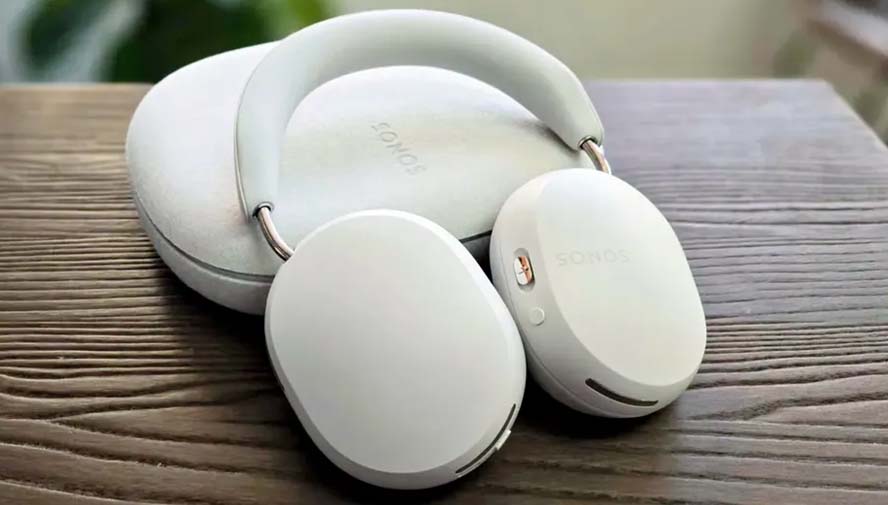Wireless audio technology has become a staple of modern life, with Bluetooth-enabled headphones leading the charge for convenience and portability.

However, the limitations of Bluetooth, especially concerning sound quality and latency, have left audiophiles and tech enthusiasts wanting more.
Enter Wi-Fi-connected headphones — a concept with the potential to redefine how we experience wireless audio. Here’s a deeper look at why this matters and what it means for the future of sound.
The Benefits of Wi-Fi Audio
1. Enhanced Audio Quality
Bluetooth headphones are constrained by limited bandwidth, which directly affects the quality of audio they can deliver. Even with the latest codecs like aptX HD and LDAC, Bluetooth cannot fully support lossless audio — a format that retains all the nuances of a music track. In contrast, Wi-Fi headphones offer significantly more data capacity, allowing them to handle uncompressed, high-fidelity audio. This translates to:
- Crystal-clear sound with superior detail and depth.
- A richer dynamic range, preserving both the softest whispers and the loudest notes.
- True lossless audio for audiophiles who demand studio-quality sound.
Wi-Fi’s broader data pipeline makes it a game-changer for anyone who appreciates high-quality audio.
2. Lower Latency
Latency — the delay between a sound being produced and when you hear it — is a critical factor for gamers, streamers, and music producers. Bluetooth headphones typically suffer from higher latency, causing noticeable lags when watching videos or playing games. Wi-Fi, however, reduces this delay significantly. With Wi-Fi headphones, users can expect:
- Faster audio transmission for real-time gaming experiences.
- Seamless synchronization between sound and visuals when streaming video content.
- Enhanced accuracy for musicians and audio engineers working in live environments.
This reduced latency positions Wi-Fi headphones as a superior choice for professional applications and everyday entertainment.
3. Better Multi-Device Connectivity
One of Bluetooth’s well-known limitations is its restricted connectivity. Most Bluetooth headphones can only pair with one or two devices at a time, requiring manual re-pairing when switching between devices. Wi-Fi-connected headphones could offer:
- The ability to connect to multiple devices simultaneously without interruptions.
- Easier switching between smartphones, laptops, smart TVs, and even smart home devices.
- A more stable and reliable connection over greater distances than Bluetooth allows.
For users juggling multiple devices, this improvement would greatly enhance convenience and productivity.
Challenges and Limitations of Wi-Fi Headphones
1. Dependence on Wi-Fi Networks
Unlike Bluetooth headphones, which function independently of Wi-Fi, Wi-Fi-connected headphones rely on a router or network connection. This dependency can limit their portability and outdoor usability. Key drawbacks include:
- Difficulty using Wi-Fi headphones in environments without a stable Wi-Fi network.
- Potential compatibility issues if devices lack built-in Wi-Fi Direct or similar technologies.
- Increased complexity in setup compared to the simplicity of Bluetooth pairing.
For users on the go, this could be a significant hurdle unless mobile devices with hotspot capabilities become more efficient.
2. Battery Life Considerations
Wi-Fi technology consumes more power than Bluetooth, potentially shortening the battery life of headphones. Manufacturers will need to prioritize energy-efficient designs and advanced battery management systems to mitigate this issue. Future improvements could focus on:
- Longer-lasting batteries optimized for high-bandwidth audio streaming.
- Smart power-saving modes that balance performance and battery usage.
- Faster charging technologies to offset the higher energy demands.
Battery performance will be a critical factor in determining consumer adoption.
3. Limited Product Availability
Despite the promise of Wi-Fi headphones, few manufacturers have fully embraced the technology. Early models, like the 1More SonoFlow Max, hint at the potential, but widespread adoption depends on market interest and technological refinement. As more companies explore this space, consumers can expect:
- Competitive offerings from audio giants like Sonos, Bose, or Sony.
- Gradual price reductions as technology matures and economies of scale take effect.
- Increased support for lossless streaming services that complement Wi-Fi audio.
Until Wi-Fi headphones become mainstream, consumers may have to wait for broader access to this advanced technology.
What the Future Holds for Wi-Fi Headphones
The potential of Wi-Fi-connected headphones is immense, but their success hinges on overcoming current limitations. Here’s what the future might bring:
- Integration with Smart Home Ecosystems Wi-Fi headphones could seamlessly integrate with smart home networks, allowing users to control music, receive notifications, and interact with virtual assistants directly.
- Customized Audio Experiences Advanced software-driven customization will enable users to tailor sound profiles for different genres, environments, or activities, making audio experiences more personalized.
- Support for Lossless Streaming Platforms With more music services offering lossless audio, Wi-Fi headphones will complement platforms like Tidal, Apple Music, and Amazon Music HD, delivering unparalleled sound quality.
- Collaborative Streaming for Group Listening Wi-Fi connectivity could facilitate synchronized audio sharing, allowing multiple people to listen to the same content simultaneously on different headphones.
Conclusion
While Bluetooth has been the dominant wireless audio technology for years, Wi-Fi-connected headphones have the potential to disrupt the market with superior sound quality, lower latency, and enhanced connectivity.
Despite current challenges related to battery life and network dependence, the future looks promising.
As technology evolves and adoption grows, Wi-Fi audio may soon become the standard for premium wireless listening experiences. For audiophiles, gamers, and tech enthusiasts alike, this revolution in wireless audio is an exciting development worth watching.
CHECK THESE OUT:
How to Connect Beats Studio Pro: A Step-by-Step Guide to Connect Beats Studio Pro…
How to Turn On and Off Beats Studio Pro: Simple Steps to Master Your…
